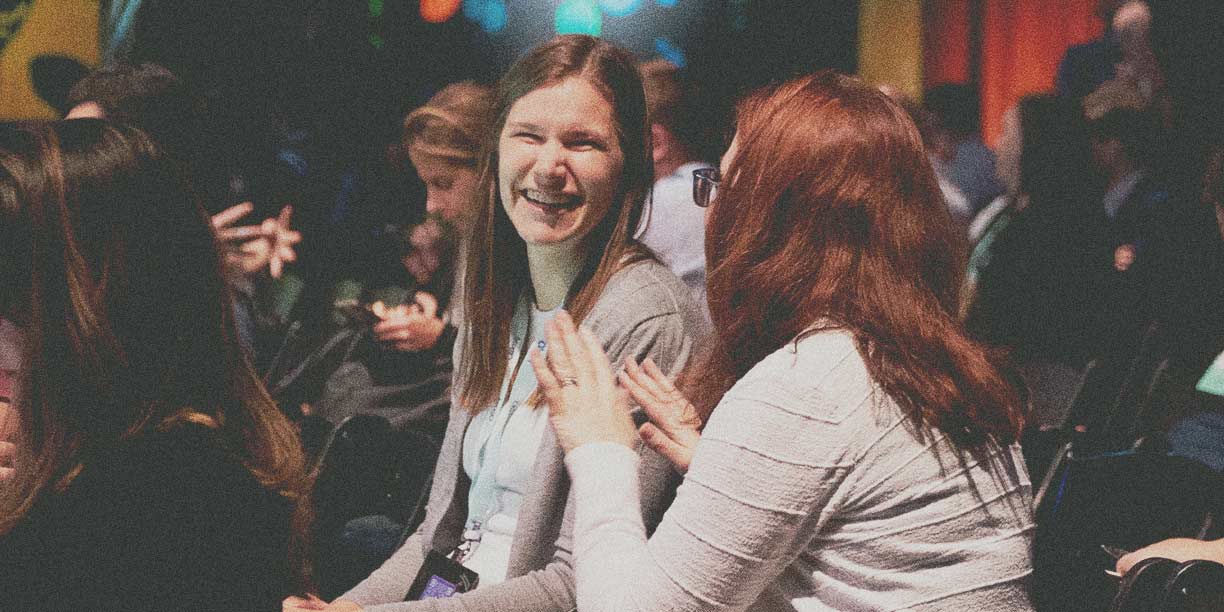2024 Faith-Based Fundraising Trends: Carving a Path to Loyal, Consistent, and Generous Donors

Faith-based nonprofits are undergoing a moment of evolution in how they engage communities of loyal donors. From traditional churches and houses of worship to disaster relief organizations and those focused on evangelism, Classy is always looking for new ways to support these organizations.
Our partnerships with more than 150 faith-based nonprofits allow us to continue learning about top priorities, roadblocks, and new ideas. One of the most recent opportunities to connect with fundraising leaders in the space was a timely conversation co-hosted with Masterworks, Joni and Friends, and Atlanta Mission in January 2024.
The virtual roundtable brought key challenges to the forefront surrounding the engagement and re-engagement across supporter generations.
We had the pleasure of catching up with Mark Neigh, the Vice President of Digital at Masterworks, an agency on a mission to amplify brands, stories, and content to grow awareness, increase engagement, and acquire and cultivate donors. Below, you’ll see his perspectives woven into our summary of the most powerful and unique insights for faith-based organizations and giving trends that will guide strategic paths forward.
Faith-based fundraising statistics shaping 2024
According to the 2024 Edelman Trust Barometer, the nonprofit sector is experiencing an overall decline in donor trust. In fact, consumers now trust for-profit businesses more than nonprofits.
Research shows that faith-based nonprofits may feel even more pressure:
- The number of church attendees has yet to recover fully from the lows of the pandemic.
- By 2020, only 47 percent of Americans belonged to a house of worship.
- Religious organizations are no longer the most trusted charities in the U.S.
The decline in those who attend services and have trust in faith-based organizations naturally impacts overall donations and religious traditions that have existed for decades.
While these trends might feel like an existential crisis for faith-based organizations, there is still a lot of hope for generosity. Many people leave the church because they don’t see organized religion living out the core principles they believe in, like helping those in need. Nonprofits who figure out how to create relevant experiences for this audience—typically a younger audience—will have a chance to succeed.
In fact, Classy’s Why America Gives report found:
- Donors across generations (39%) made small changes and sacrifices in their daily living expenses to have funds to donate to causes and nonprofit organizations they care about.
- Next-generation donors are 38% more likely to make significant changes to their lifestyle due to the state of the economy than traditional donors.
- Loyal donors are twice as likely to keep their charitable donations, even if they experience a financial stressor, compared to passive donors.
The 2024 faith-based giving trends we discuss below will provide expert insights on reestablishing your organization as a powerful, reliable, and inspiring cause to combat downward cycles.
Discover how to apply a proactive, next-generation approach to build a community of trusting and meaningful relationships that will sustain your organization’s mission for the long term.
The generational impact on faith-based giving trends
Acknowledging the divide in charitable giving between generations and how it impacts new expectations for religious giving is critical to retaining and acquiring supporters.
Younger givers are coming up in a world far different from their parents and grandparents, especially regarding their connection to religion. A look at the difference in the number of younger Millennials (38%) and Baby Boomers (59%) who feel religion is critical in their lives showcases the shift at play, according to a recent Pew Research Center survey.
The ethos behind faith-based donations as an act for positive change and community nurturing remains fairly consistent. A study by Barna shows that all generations show a pattern of donating more to churches and religious organizations over other nonprofits. The study also shows that 27% of the total donations Gen Z made and 26% of the total donations Millennials made were to religious organizations.
What’s changing are the different philanthropic priorities that Boomers, Gen X, and Gen Z bring to their online giving experiences, particularly related to faith.
Nonprofits and direct response agencies drafted on the Builders’ generosity and salivated over the Boomers’ wealth, but pretty much left the other generations behind. No one is building marketing approaches for Gen X. And in the process, I think we’ve lost whole generations to philanthropy as we’ve known it. I don’t think most younger generations will donate the way Baby Boomers did.
Understanding the motivations and desired relationships of each generation with nonprofits is crucial. Tailored experiences based on this knowledge will strengthen connections, drive conversions, and foster loyalty.
Faith-based organizations looking to combat downward giving trends, capture the attention of younger donors, and safeguard the retention of Gen X and Boomers will need to craft an engagement strategy unique to each cohort.
The breakdown of generational motivation
-
- Baby Boomers prioritize organizational trust and brand recognition, with more curiosity around charity ratings and fundraising cost transparency. They are more likely to attend religious services and identify faith as a critical aspect of their lives.
- Gen X has the highest disposable income, straddling the boundaries of technology with equal comfort of physical mail and Instagram while showing more digital giving patterns for many organizations.
- Gen Y and Gen Z care more about belonging to a cause and feeling a connection with the impact a nonprofit makes but lack the same trust in religious organizations as prior generations. They are least likely to attend religious services consistently and view the community more broadly, comfortably engaging with those they’ve never met in person.
Shifting today’s downward faith-based fundraising trends: Turning transactions into experiences
It’s true that every donation is technically a transaction between a community member and a faith-based organization. Still, each moment of generosity with a donor is an opportunity to build a deep, long-lasting relationship with strong stewardship.
That will take broadening the perspective on engagement with those who attend religious gatherings and identifying moments that fall outside of formal gatherings.
So what does the new era of experiences look like for faith-based giving? It’s all about what draws students, missionaries, and congregations to an organization. Understanding the motivations and desires of their relationship to faith can help craft meaningful touchpoints that appeal to specific generations.
If we know younger donors want that sense of belonging and desire to be involved in their faith-based organizations, a simple tax receipt or a generic thank-you may miss the opportunity to build a relationship on a more meaningful level. They need to feel valued as humans and embraced as individuals who are part of a religious community with shared values and views. That vantage point is received far differently than being treated only as avenues for raising money, even if it’s not intentional.
Philanthropy for a younger generation has ties to community and capitalism. Like, using Venmo to help a TikTok creator who got sick. Or BOGO concepts like Bombas. Traditional nonprofits need to think about how they open up these avenues for giving—and not use traditional measurement models to understand if they are successful.
Consider how every interaction, from a quick Instagram story update on upcoming services to the registration process for religious events, works harmoniously to create your donors’ experience. When your community members tell their friends what your organization means to them, give them intentional moments of connection to reference. From there, you can reverse the transactional mentality and show your community members that they matter inside and outside in-person gatherings.
As experiential philanthropy models rise, we’ll walk you through three key areas to begin turning things around.
1. Community building
When donors sense they’re part of a broader group that cares for them, shares their values, and appreciates their charitable giving behaviors, religious organizations have the strongest opportunity to retain them long term. Community is key to reversing the lack of trust and dwindling engagement in religious nonprofits.
We know trust is critical to Boomers, but for younger generations who tend to trust less easily, Why America Gives found they often look to their inner circles for opportunities and learning about new causes.
Modern Millennial and Gen Z donors have new definitions of philanthropy, with a more open purview into who their communities are beyond people they know or their local faith-based organization. For example, they may take actions like sending a Venmo donation to someone on TikTok who’s sick or advocating for an influencer fundraising for a cause important to them.
Faith-based organizations can get creative about sharing intimate moments with communities that are more comfortable engaging online. You can build trust with a creative view into mission trips, storytelling, raising awareness of those in need, and events on platforms like TikTok, encouraging more peer-to-peer sharing to build each into ongoing and far-reaching conversations. Consider ways to reach younger donors and help them see themselves among the active participants you already count on.
Tapping into emotional and relational motivations to inspire giving
Philanthrocapitalism or philanthropic capitalism demonstrates people’s conscious choices to give back and impact broader communities with their everyday behaviors. One example is buying from good-work for-profit organizations like Bombas, an apparel brand that donates high-demand clothing items to those in need in exchange for every customer purchase.
Faith-based organizations are doing this good work too, and calling on communities to come together around their missions is a great way to capture attention and keep donors engaged. Communicate frequently about what’s crucial to your organization and its members, always relating it to the heart of the mission. As people can see a specific moment of need in person and reiterate it online, they may feel more compelled to step in and help or stay involved to be a part of the solution.
Meaningful faith-based events and gatherings matter, but so do the quicker interactions that happen on social media, your website, emails, and throughout the donation experience itself.
Read next: TikTok Philanthropy’s Important Lessons2. Branding
Building the trust of all donors, particularly those in younger generations, requires a strong sense of identity. We continue to see a high connection between trust and name recognition, which is your key to catching and keeping the attention of new audiences.8 Even a slightly unclear identity can stand in your way, making it the ideal time to promote your faith-based nonprofit similarly to a lifestyle brand that offers a sense of connection to those who support it.
Very few nonprofits think of the value of paid media outside of the direct return on ad spend. But well-placed media that focuses on brand recognition is often less expensive than conversion-optimized media and may have more lasting effects.
We know that the word brand might feel out of place for faith-based organizations, but we invite you to think of your nonprofit brand as a way to legitimize your trusted mission. A close focus on small details, from colors to imagery to storytelling, helps your organization remain present in your donors’ minds. The sense of being a part of an established religious community with clear values and a strong history can transform intent to give into tangible impact.
Infusing community into your brand
Your brand should reflect your mission and vision statement but don’t shy away from leaning on your community to help bring it to life in a new way. Branding needs to be consistent and intentional, focusing on conveying messages in a relatable and understandable way.
For example, tapping on donors and those attending religious gatherings regularly from all generations can help you share testimonials that offer strong perspectives. Hearing directly from peers can resonate with wider audiences and inspire them to get involved.
The idea of narrative and storytelling is likely something your faith-based organization is familiar with within the in-person interactions historically at the center of donor relationships. The idea of an established and documented brand expands that sentiment to all the places you interact, inspiring trust and a desire to get involved with those within various geographic locations and stages of life.
3. Multichannel communication
With a community-centric approach to engagement and a consistent brand, you’ll find more ways to tailor your message across audiences and channels. For example, you may want to call on your nationwide online donor community to get involved in annual fundraising campaigns while spreading awareness of localized welcome events specifically for young first-time donors.
One thing I see many organizations with robust direct response programs do is let their digital channels be led by their direct mail. This will almost always hamper your digital media’s effectiveness. Instead, let the digital channel run in its lane and optimize it for performance on its terms.
Multichannel communication helps you engage donors of various demographics and generations with a personal feel based on your goals for the year. This will allow you to get in front of the right donors at the right time, with an outlet of information and interaction styles they trust and use daily.
Balancing digital and traditional approaches
Appealing to different generations online and offline might look like:
- Offering more giving options by sending out mailers with a QR code option for simple mobile giving through digital wallets or credit cards alongside the link to your donation page
- Sharing crucial conversations and updates on social media and using the polling functionality available on platforms like Instagram, Facebook, and LinkedIn to directly involve as many as people in the conversation
- Livestreaming services or portions of faith-based community gathering online and restoring the recordings to continue reaching new donors and offering the option to give through a simple donation form from a hybrid or virtual event platform
- Embedding a donation form on your homepage or other high-traffic pages for additional giving opportunities
- Introducing a monthly giving program as an opportunity to modernize the recurring nature of giving tithes and offerings
If you’re unsure which channels to use, don’t be afraid to test and see where there’s engagement. That way, you can avoid jumping entirely to modern platforms that may isolate your older generations of supporters and can gain insight directly from your audience on where they’re likely to engage.
The key is maintaining consistency and personalization across any channels you choose to further build that trust factor.
Embracing change for religious giving growth
As you can see, the fundamental philosophy behind these engagement approaches is consistent with past years. Still, how your organization can implement them is different. Modern approaches reflect the incredible advancements in technology available to faith-based organizations and the data intelligence that informs strategic decision-making with far less time, resources, and effort.
You’re in a much better place to succeed with access to the right tools to monitor what works and solve real-time challenges as you try these new approaches. The key to growth is to embrace accessibility to technology to fuel proactive approaches that can help you establish loyal, reliable donor communities.
While change is the constant we can expect, taking the time to understand what ignites the passion within your donors and what they want to see from you as you establish new engagement pathways will help you shift faith-based giving trends in a new direction—and in your favor.
Copy Editor: Ayanna Julien

Join Classy's Faith-Based Community


